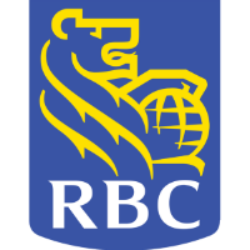The idea of a "no landing" scenario, where the U.S. economy avoids a significant slowdown or recession, has been gaining traction recently. Bank of America (BofA) analysts believe that this outcome could be a bullish signal for stocks, pushing major indices like the Dow Jones, Nasdaq, and S&P 500 higher in the near term. Let’s break down why a "no landing" scenario is bullish and what it means for the markets.
What is a "No Landing" Scenario?
In economic terms, "no landing" refers to the idea that the U.S. economy might not face a hard landing (recession) or even a soft landing (slower growth but no contraction). Instead, it continues to expand steadily, driven by robust consumer spending and a resilient labor market despite tightening monetary policy.
Why It’s Important: Many economists and market participants had feared that aggressive Federal Reserve rate hikes would eventually lead to an economic downturn. However, with inflation stabilizing and growth holding steady, a "no landing" outcome could indicate that the economy is more resilient than expected.
Why a "No Landing" Scenario is Bullish for Stocks
Continued Growth: If the economy manages to maintain momentum without falling into a recession, corporate earnings may remain strong. This would support higher stock valuations, especially in growth-sensitive sectors like technology and consumer goods.
Earnings Resilience: In a "no landing" environment, companies are likely to continue generating solid revenues and profits, leading to earnings growth that can support stock prices. Tech and financial sectors, in particular, could benefit as companies avoid the pressure of economic contraction.
Investor Sentiment: A "no landing" scenario could fuel optimism in the stock market as fears of an imminent recession fade, leading to higher demand for equities. Investors might rotate back into riskier assets, driving up stock prices.
Potential Risks to Consider
While the idea of a "no landing" scenario sounds promising, there are still risks. One of the biggest concerns is that inflation could reignite if economic growth remains too strong, prompting further rate hikes from the Federal Reserve. This could hurt sectors sensitive to borrowing costs, such as real estate and utilities.
Additionally, external factors like geopolitical tensions or supply chain disruptions could derail this optimistic outlook, impacting global markets and introducing volatility.
Market Impact
S&P 500 and Nasdaq: With a strong focus on tech and growth stocks, these indices are particularly sensitive to economic conditions. A "no landing" scenario could provide the boost they need after a period of cautious sentiment and mixed earnings results.
Dow Jones: This index, which includes industrials and consumer goods, would benefit from continued economic expansion, as demand for consumer products and infrastructure investments remains strong.
For those monitoring the market, keeping an eye on Key Metrics (TTM) will help assess the financial performance of companies as they navigate this potential "no landing" scenario.
Conclusion
The notion of a "no landing" scenario is a bullish one for stocks, as it suggests that the U.S. economy could continue growing without the drag of a recession. However, it’s essential to remain cautious about inflation risks and external factors that could impact this outlook. Investors should stay vigilant and adjust their portfolios to balance risk and reward as the market reacts to this evolving economic narrative.
About NYSE: BAC
B
ank of America Corporation, through its subsidiaries, provides banking and financial products and services for individual consumers, small and middle-market businesses, institutional investors, large corporations, and governments worldwide. Its Consumer Banking segment offers traditional and money market savings accounts, certificates of deposit and IRAs, noninterest-and interest-bearing checking accounts, and investment accounts and products; and credit and debit cards, residential mortgages, and home equity loans, as well as direct and indirect loans, such as automotive, recreational vehicle, and consumer personal loans. The company's Global Wealth & Investment Management segment offers investment management, brokerage, banking, and trust and retirement products and services;
Price: 45.90
Market cap: 352.2 billion USD
Eps: 2.76
P/e ratio: 16.63
Focus Analysis On: BAC
All news about: BAC
 Berkshire Hathaway
Profile, Qualitative, Financials ...
Overview
Berkshire Hathaway
Profile, Qualitative, Financials ...
Overview
 Royal Bank Of Canada
Fundamental Analysis
FA
Royal Bank Of Canada
Fundamental Analysis
FA
 Pfizer Inc.
Supply Analysis
Drugs, Devices, Recalls, Compliance ...
Pfizer Inc.
Supply Analysis
Drugs, Devices, Recalls, Compliance ...
 Amazon.com, Inc.
Risks/AI
NLP Analyzed Risk Factors, AI Arguments
Amazon.com, Inc.
Risks/AI
NLP Analyzed Risk Factors, AI Arguments
 The Boeing Company
M&A Deals
Deal Sizes, Dates, Security Type, S-4 ...
The Boeing Company
M&A Deals
Deal Sizes, Dates, Security Type, S-4 ...
 Adobe Inc.
Employee Analysis
VpE, Survey, Geographical Biding & Aqc.
Adobe Inc.
Employee Analysis
VpE, Survey, Geographical Biding & Aqc.



